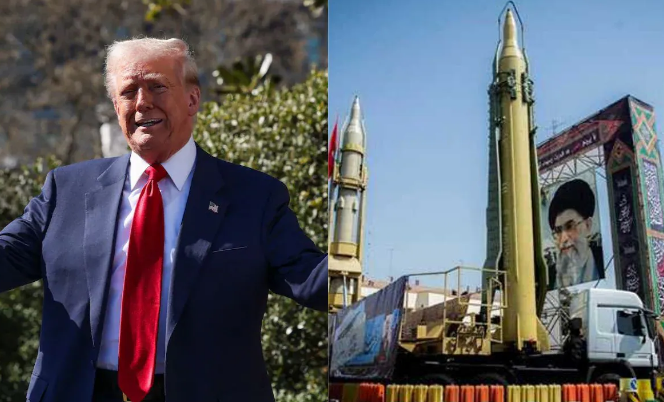
Trump Held Back Iran Strike Amid Concerns Over ‘Bunker Buster’ Bomb Effectiveness, Say Officials
Defence officials said there is intense disagreement over the possibility of a successful US strike on the Iranian nuclear plant located deep underground at Fordow.
According to those involved with the discussions, Donald Trump has told defence officials that it would only make sense for the US to strike Iran if the so-called “bunker buster” bomb was assured to destroy the vital nuclear enrichment plant at Fordow.
According to the people, Trump has not authorised strikes because he is still awaiting the prospect that the threat of US involvement could encourage Iran to engage in negotiations. Trump was informed that dropping the GBU-57s, a 13.6-tonne (30,000-lb) bomb, would effectively demolish Fordow.
Perhaps only a tactical nuclear weapon could destroy Fordow because it is so deeply hidden, according to two defence officials briefed on the usefulness of GBU-57s, a matter of intense debate at the Pentagon since the beginning of Trump’s tenure.
According to two persons familiar with the situation, Trump is not thinking of using a tactical nuclear weapon on Fordow, and the chairman of the joint chiefs of staff, Gen. Dan Caine, and defence secretary Pete Hegseth did not discuss the option during talks in the White House situation room.
Conventional bombs, even when used as part of a larger strike package consisting of multiple GBU-57s, would not penetrate deep enough down, according to the defence officials briefed on the subject; instead, they would only cause enough damage to collapse tunnels and bury them under debris.
Trump is not taking into account the possibility that the US would have to soften the ground with conventional bombs before dropping a tactical nuclear bomb from a B2 bomber to destroy the entire facility in order to completely destroy Fordow, which Israeli intelligence estimates will fall as far as 300 feet (90 meters).
The defence department’s Defence Threat Reduction Agency (DTRA), which tested the GBU-57, conducted the assessments while examining the restrictions of US military ordinance against certain subterranean facilities.
The fact that dropping GBU-57s will probably delay Iran’s capacity to acquire weapons-grade uranium for a few years but not totally stop the program highlights the complexity of such an attack and what success would mean.
Requests for comment were not immediately answered by Pentagon and White House spokespeople.
Since the International Atomic Energy Agency (IAEA) discovered that Fordow had enriched uranium to 83.7%, which is nearly the 90% required for nuclear weapons, shutting the site down militarily or diplomatically is considered essential to preventing Iran from obtaining nuclear weapons.
Since Israel lacks the weapons to attack a facility that deep and the aircraft to transport them, any attempt to destroy Fordow would need US assistance.
According to the two individuals who were acquainted with the DTRA briefing, the facility’s location inside a mountain and the fact that the bomb has never been deployed in a similar circumstance previously make it impossible to use the GBU-57 to target Fordow.
Regarding the GBU-57’s shortcomings, retired Maj Gen Randy Manner, a former Dtra deputy director, stated that “it would not be a one and done” and that Fordow could be swiftly rebuilt. The initiative could be delayed by six months to a year as a result. Although it sounds fantastic on TV, it isn’t real.
Because it was created to demolish underground bunkers, the bomb is often referred to as a “bunker buster.” However, only a B2 bomber with air dominance can carry it, and it needs a strong GPS signal to lock in on its target.
Even though Israel claims to have air dominance over Iran, a successful attack would still need the GBU-57 to get deep enough into the ground to neutralise the facility and any GPS jammers and other defences to be removed beforehand.


